Dear All,
We are happy to announce a Q+ Hangout for the month of November, on the recent "loophole-free Bell test"! Bas Hensen will tell us about this experiment. As usual, if you are watching with a group and want to reserve a seat in the hangout then leave a comment on the event page:
https://plus.google.com/events/cuiuj6bd16j00imttd7sqhb3t54
We also encourage individuals interested in active participation---which typically involves asking questions after the talk---to join the hangout. Otherwise you can watch on the livestream. Details follow.
Speaker: Bas Hensen, QuTech, Kavli Institute of Nanoscience Delft, Delft University of Technology.
Date: 2 pm UTC on 12th November, 2015,
Title: Experimental loophole-free violation of a Bell inequality using entangled electron spins separated by 1.3 km.
Abstract: In his seminal work[1], John Bell proved that no theory of nature that obeys locality, realism and free will can reproduce all the predictions of quantum theory. In the past decades, numerous ingenious Bell inequality tests have been reported. However, because of experimental limitations, all experiments to date required additional assumptions to obtain a contradiction with local realism, resulting in loopholes. I will present the main result [2] of my PhD, a Bell experiment that is free of any such additional assumption and thus directly tests the principles underlying Bell's inequality. We employ an event-ready scheme that enables the generation of high-fidelity entanglement between distant electronic spins [3]. Efficient spin readout [4] avoids the fair sampling assumption (detection loophole), while the use of fast random basis selection and readout combined with a spatial separation of 1.3 km ensure the required locality conditions. This result rules out large classes of local realist theories, and paves the way for implementing device-independent quantum-secure communication and randomness certification. In combination with the control of nuclear spins around the NV centre [5,6], it establishes the NV centre as a prime candidate for the node of a future quantum network [7]. I will discuss the set of optical and microwave control techniques used, discuss the limitations of the NV centre, and possible improvements.
[1] Bell, J. S. On the Einstein-Podolsky-Rosen paradox. Physics 1, 195 (1964).
[2] B. Hensen, H. Bernien, A.E. Dréau, A. Reiserer, N. Kalb, M.S. Blok, J. Ruitenberg, R.F.L. Vermeulen, R.N. Schouten, C. Abellán, W. Amaya, V. Pruner, M. W. Mitchell, M. Markham, D.J. Twitchen, D. Elkouss, S. Wehner, T.H. Taminiau, R. Hanson. Experimental loophole-free violation of a Bell inequality using entangled electron spins separated by 1.3 km. arXiv:1508.05949 (2015).
[3] H. Bernien, B. Hensen, W. Pfaff, G. Koolstra, M. S. Blok, L. Robledo, T. H. Taminiau, M. Markham, D. J. Twitchen, L. Childress, R. Hanson. Heralded entanglement between solid-state qubits separated by three meters. Nature 497, 86 (2013)
[4] L. Robledo, L. Childress, H. Bernien, B. Hensen, P.F. A. Alkemade, R. Hanson. High-fidelity projective read-out of a solid-state spin quantum register. Nature 477, 547 (2011).
[5] W. Pfaff, B. Hensen, H. Bernien, S. B. van Dam, M. S. Blok, T. H. Taminiau, M. J. Tiggelman, R. N., Schouten, M. Markham, D. J. Twitchen, R. Hanson. Unconditional quantum teleportation between distant solid-state qubits. Science 345, 532 (2014).
[6] J. Cramer, N. Kalb, M. A. Rol, B. Hensen, M. S. Blok, M. Markham, D. J. Twitchen, R. Hanson & T. H. Taminiau. Quantum error correction by stabilizer measurements and feedback. Submitted (2015).
[7] H. J. Kimble, The quantum internet. Nature 453, 1023 (2008).
To keep up to date with the latest news on Q+ hangouts you can follow us on:
Google+: http://gplus.to/qplus
Twitter: @qplushangouts
Facebook: http://facebook.com/qplushangouts
or visit our website at http://qplus.burgarth.de
